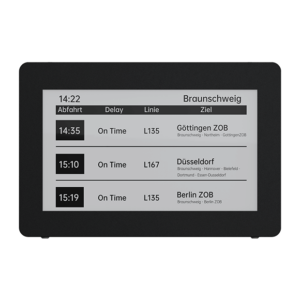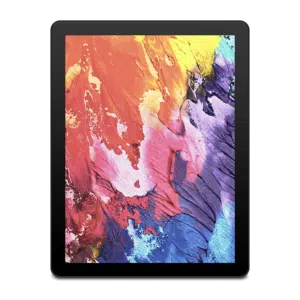Comparing Electronic Paper Displays with OLED and LED
Comparing Electronic Paper Displays with OLED and LED
Blog Article
Display technology has become an integral part of our day-to-day lives, showing in sets from smartphones and e-readers to large-scale advertising panels. Among the diverse range of E-ink screen display, OLED (Organic Light-Emitting Diodes), and LED (Light-Emitting Diodes) have surfaced as some of the very most widely discussed options. While every type acts its distinctive function, their variations in functions, efficiency, and use instances make them ideal for specific applications. Let's have a closer consider the critical characteristics of those display technologies.
Electronic Paper displays (ePaper)
Electronic Paper displays, also known as ePaper or Electronic Ink displays, are created to copy the look and readability of standard Ink on paper. This engineering uses little microcapsules comprising priced black and bright particles suspended in a clear fluid. When an electrical field is used, the contaminants move to each side of the pill, creating a visible image. The picture remains fixed until still another electric field is used, which makes it suitable for showing text-based material such as books, papers, and e-readers.

One of the main features of ePaper displays is their reduced energy consumption. Unlike traditional LCD
Knowledge Electronic Paper displays
An electronic Paper display (ePaper) mimics the appearance of Ink on paper. Unlike conventional screens, ePaper utilizes its power to reveal ambient gentle as opposed to emitting its own. This engineering not merely minimizes vision stress but in addition offers unparalleled readability in sunlight, rendering it suitable for e-readers and digital signage solutions.
One standout function of ePaper displays is their extremely low power consumption. Since they simply use energy when adjusting content, ePaper monitors are highly successful and suited to battery-powered devices. However, their renew rates are slower compared to OLED and LED displays, limiting their applicability to static or minimally active content.
OLED displays
OLED displays are known for their stunning visual quality, giving lively colors, deep blacks, and excellent contrast. Each pixel in an OLED display produces its own gentle, eliminating the requirement for a backlight. That not just provides for finer, more lightweight types but also benefits in better energy efficiency compared to LED using scenarios.
One critical advantageous asset of OLED displays is their flexibility. They can be manufactured in rounded or foldable styles, creating them popular in cutting-edge smartphones and wearable devices. Nevertheless, OLED displays include challenges, such as susceptibility to burn-in and smaller lifespans compared to different technologies.
LED displays
LED displays, the most typical of the three, count on a backlit process to mild their pixels. While not as creatively impressive as OLED E ink sign, LEDs are very sturdy, long-lasting, and cost-effective. These qualities make them ideal for a broader selection of applications, including TVs, computer screens, and outside advertising.
LED displays an average of accomplish properly in terms of perfection, creating them the ideal choice for environments with large normal light. However, they are unsuccessful in reaching the exact same strong distinction and shade reliability as OLED technology.

Final Contrast
When deciding between ePaper, OLED, and LED displays, the option depends mainly on the supposed purpose. For fixed content like examining or signage, ePaper excels having its reduced energy consumption and high exposure in normal light. OLED shines in purposes where vivid colors and flexibility are paramount. Meanwhile, LED remains a trusted and cost-efficient alternative for a variety of general-purpose needs.
Each display technology provides anything distinctive to the table, ensuring that there is a great choice for every situation. Understanding these variations can help consumers and organizations produce informed decisions that match their unique display requirements. Report this page